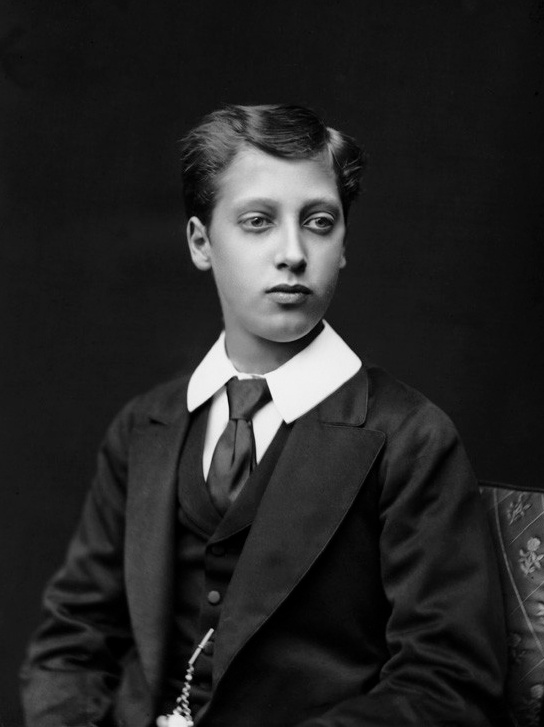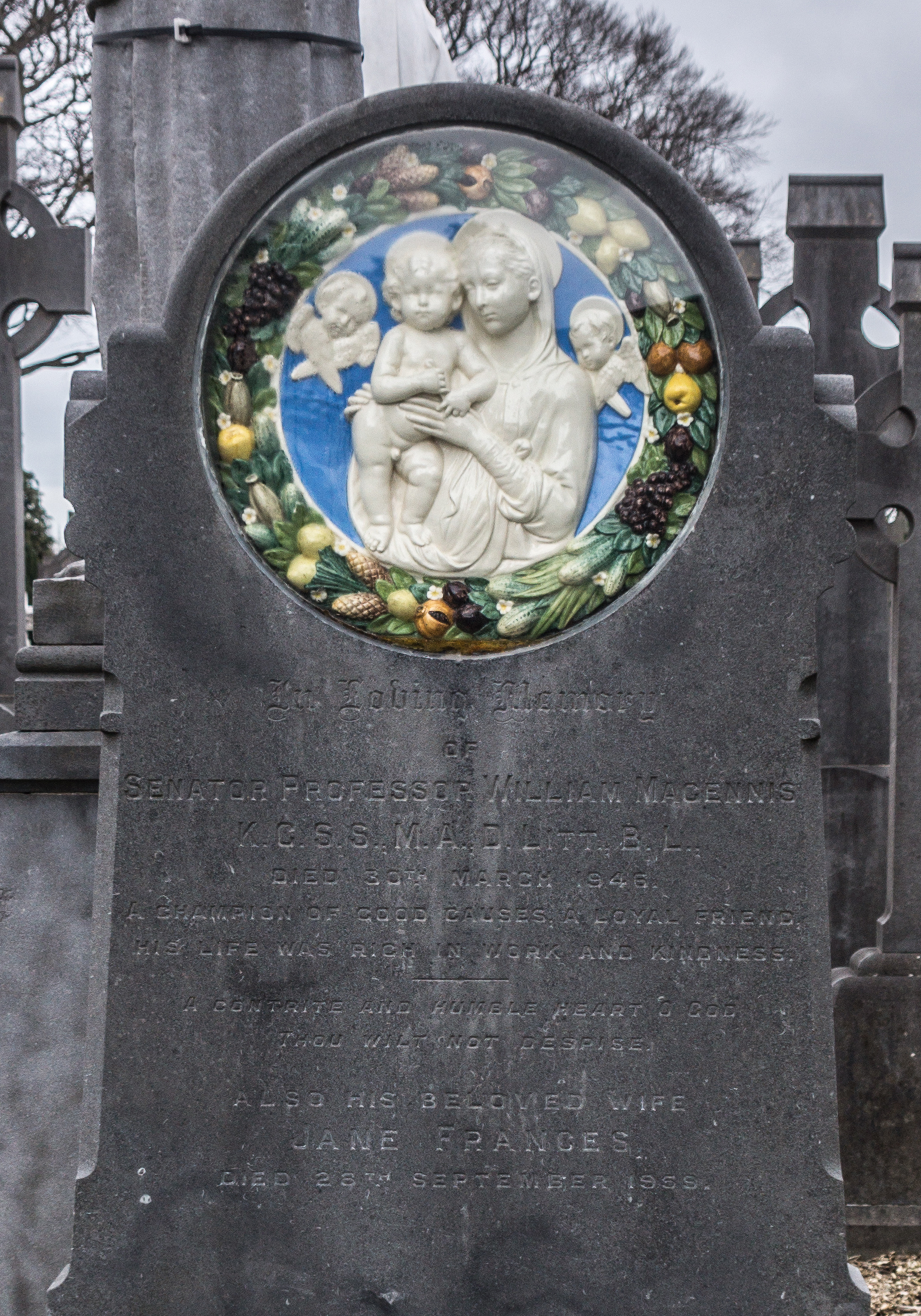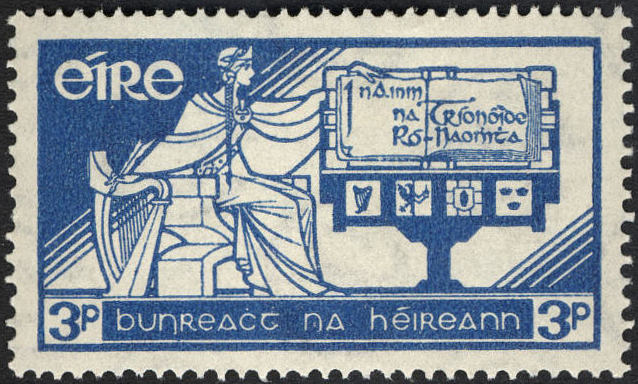|
Sir John Keane, 5th Baronet
Sir John Keane, 5th Baronet, DSO (3 June 1873 – 30 January 1956) was an Irish barrister and politician. Early life Keane was the son of Sir Richard Keane, 4th Baronet and Adelaide Vance, daughter of John Vance MP. He was educated at Clifton College and Royal Military Academy Woolwich. He succeeded his father as 5th Baronet in 1892 and was appointed High Sheriff of County Waterford for 1911–1912. He was a member of Seanad Éireann and a director of Bank of Ireland becoming Governor (Chairman) from 1941 to 1943. Military career He was commissioned into the Royal Field Artillery on 17 June 1893; served in South Africa during the Second Boer War (mentioned in despatches, London Gazette 10 September 1901, Queen's South Africa Medal). During World War I, he was mentioned in despatches, awarded the Distinguished Service Order (London Gazette 14 January 1916) and the French Legion of Honour (London Gazette 14 July 1917). He ended the war as a Lieutenant-Colonel in the Royal Tank ... [...More Info...] [...Related Items...] OR: [Wikipedia] [Google] [Baidu] |
John Thomas Keane
John Thomas Keane (died 22 May 1946) was an Irish politician. He was an Independent politician (Ireland), independent member of Seanad Éireann from 1944 to 1946. He was elected to the 5th Seanad in 1944 by the Labour Panel. He died in office in 1946, and Frederick Hawkins (politician), Frederick Hawkins was elected to fill the vacancy. References Year of birth missing 1946 deaths Members of the 5th Seanad Independent members of Seanad Éireann {{Ireland-senator-stub ... [...More Info...] [...Related Items...] OR: [Wikipedia] [Google] [Baidu] |
Irish Agricultural Organisation Society
The Irish Agricultural Organisation Society (IAOS) was an agricultural association in Ireland which advocated, and helped to organise, agricultural cooperativism, including mutual credit facilities. From its establishment by Sir Horace Plunkett in 1894, it quickly became an important element of the Irish economy and laid the foundations of the successful Irish dairy industry. Although officially apolitical, the IAOS became associated with the Irish Home Rule movement and Irish nationalist activity from the early 20th century. It was later reorganised, and renamed as the Irish Co-operative Organisation Society Limited, a body which continues to operate in Ireland. Foundation The Irish Agricultural Organisation Society (IAOS) was founded in 1894 by Sir Horace Plunkett, an Anglo-Irish politician with a keen interest in agriculture and rural affairs. He had established a cooperative on his family estate at Dunsany as early as 1878. Other key figures involved in setting up the IAOS ... [...More Info...] [...Related Items...] OR: [Wikipedia] [Google] [Baidu] |
Keane Baronets
The Keane Baronetcy, of Belmont in the County of Waterford, is a title in the Baronetage of the United Kingdom. It was created on 1 August 1801 for John Keane, Member of Parliament for Youghal from 1801 to 1806 and from 1808 to 1818. He had earlier represented Bangor in the Irish House of Commons. The second Baronet was Whig Member of Parliament for County Waterford between 1832 and 1835. The third Baronet served as high sheriff of County Waterford in 1856 and the fourth Baronet in 1881. The fifth Baronet was a Senator of the Irish Free State and Governor of the Bank of Ireland. The sixth Baronet, Sir Richard Keane, excelled in the military and also worked in 1930s as a diplomatic correspondent for ''The Times'' newspaper. Sir Richard Keane was also partly responsible for bringing the Military and Hospitaller Order of St. Lazarus of Jerusalem to Ireland in 1962 and was a Knight of St. Lazarus. As of 2014 the title is held by his son, the seventh Baronet, who succeeded in 2010 ... [...More Info...] [...Related Items...] OR: [Wikipedia] [Google] [Baidu] |
Alexander Bassano
Alexander Bassano (10 May 1829 – 21 October 1913) was an English photographer who was a leading royal and high society portrait photographer in Victorian London. He is known for his photo of the Herbert Kitchener, 1st Earl Kitchener, Earl Kitchener in the ''Lord Kitchener Wants You'' army recruitment poster during the First World War and his photographs of Queen Victoria. Biography Alessandro Bassano was the second youngest child of Italian Clemente Bassano, originally a fishmonger of Cranbourne Street, later an oilman and warehouseman of Jermyn Street, London, and his English wife, Elizabeth Browne. He later anglicised his first name to Alexander. Bassano received early artistic training with artists Augustus Egg and William Beverley. He opened his first studio in 1850 in Regent Street. The studio then moved to Piccadilly 1859–1863, to Pall Mall, London, Pall Mall and then to 25 Old Bond Street in 1877. There was also a Bassano branch studio at 132 King's Road, Brighto ... [...More Info...] [...Related Items...] OR: [Wikipedia] [Google] [Baidu] |
National Portrait Gallery (London)
The National Portrait Gallery (NPG) is an art gallery in London housing a collection of portraits of historically important and famous British people. It was arguably the first national public gallery dedicated to portraits in the world when it opened in 1856. The gallery moved in 1896 to its current site at St Martin's Place, off Trafalgar Square, and adjoining the National Gallery (London), National Gallery. It has been expanded twice since then. The National Portrait Gallery also has regional outposts at Beningbrough Hall in Yorkshire and Montacute House in Somerset. It is unconnected to the Scottish National Portrait Gallery in Edinburgh, with which its remit overlaps. The gallery is a non-departmental public body sponsored by the Department for Digital, Culture, Media and Sport. Collection The gallery houses portraits of historically important and famous British people, selected on the basis of the significance of the sitter, not that of the artist. The collection includes ... [...More Info...] [...Related Items...] OR: [Wikipedia] [Google] [Baidu] |
Michael Hicks-Beach, 1st Earl St Aldwyn
Michael Edward Hicks Beach, 1st Earl St Aldwyn, (23 October 1837 – 30 April 1916), known as Sir Michael Hicks Beach, Bt, from 1854 to 1906 and subsequently as The Viscount St Aldwyn to 1915, was a British Conservative politician. Known as "Black Michael", he notably served as Chancellor of the Exchequer from 1885 to 1886 and again from 1895 to 1902 and also led the Conservative Party in the House of Commons from 1885 to 1886. Due to the length of his service, he was Father of the House from 1901 to 1906, when he took his peerage. Background and education Born at Portugal Street in London, Hicks Beach was the son of Sir Michael Hicks Beach, 8th Baronet, of Beverston, and his wife Harriett Vittoria, second daughter of John Stratton. He was educated at Eton College and Christ Church, Oxford, where he graduated with a first class degree in the School of Law and Modern History in 1858. In 1854 he succeeded his father as ninth Baronet. Political career, 1864–1888 In 1864 he was ... [...More Info...] [...Related Items...] OR: [Wikipedia] [Google] [Baidu] |
Sodomy
Sodomy () or buggery (British English) is generally anal or oral sex between people, or sexual activity between a person and a non-human animal ( bestiality), but it may also mean any non- procreative sexual activity. Originally, the term ''sodomy'', which is derived from the story of Sodom and Gomorrah in the Book of Genesis, was commonly restricted to anal sex. Sodomy laws in many countries criminalized the behavior. In the Western world, many of these laws have been overturned or are routinely not enforced. A person who practices sodomy is sometimes referred to as a sodomite. Terminology The term is derived from the Ecclesiastical Latin or "sin of Sodom", which in turn comes from the Ancient Greek word (Sódoma). Genesis (chapters 18–20) tells how God wished to destroy the "sinful" cities of Sodom and Gomorrah. Two angels are invited by Lot to take refuge with his family for the night. The men of Sodom surround Lot's house and demand that he bring the messengers o ... [...More Info...] [...Related Items...] OR: [Wikipedia] [Google] [Baidu] |
William Magennis
William Magennis (18 May 1867 – 30 March 1946) was an Irish politician and university professor. Early and personal life Born in Belfast, he was educated at Belvedere College, Dublin, and University College Dublin (UCD). In 1893 he was called to the Bar. He was professor of philosophy at Carysfort College and he held the Chair of Metaphysics at UCD. Political career Magennis was first elected to Dáil Éireann as an Independent Teachta Dála (TD) for the National University constituency at the 1922 general election. He was elected as a Cumann na nGaedheal TD for the same constituency at the 1923 general election. In 1926, he was one of the founders of a new political party called Clann Éireann. The party advocated the abolition of the Oath of Allegiance to the British King, called for lower taxes and less legislation and was critical of the 1925 Boundary Commission agreement. The party attracted little support and it did not win any seats at the June 1927 general electi ... [...More Info...] [...Related Items...] OR: [Wikipedia] [Google] [Baidu] |
The Tailor And Ansty
''The Tailor and Ansty'' is a 1942 book by Eric Cross about the life of the Irish tailor and storyteller, Timothy Buckley, and his wife Anastasia ("Ansty") Buckley (née McCarthy). The book was banned by the Censorship of Publications Board because of its depiction of premarital cohabitation, and its sexual frankness. ''The Tailor and Ansty'' was the subject of significant debate in 1942 in Seanad Éireann, Ireland's upper house, in which Buckley was accused of being "sex-obsessed", and his wife of being a "moron". It was said that they were examples of the "sores of moral leprosy" that could "undermine Christianity". Parts of the Seanad debate were struck from the record because they contained quotes from the book made by Sir John Keane, to determine if they were really obscene or not. Keane also made the point that an opponent, Professor Magennis, did not know what sodomy was. The wider debate concerned the activities of the then "Free State Board of Book Censors", and Keane's ... [...More Info...] [...Related Items...] OR: [Wikipedia] [Google] [Baidu] |
Censorship In The Republic Of Ireland
In Ireland, the state retains laws that allow for censorship, including specific laws covering films, advertisements, newspapers and magazines, as well as terrorism and pornography. In the early years of the state, censorship was widely enforced, particularly in areas that were perceived to be in contradiction of Roman Catholic dogma, including abortion, sexuality and homosexuality. The church had banned many books and theories for centuries, listed in the Index Librorum Prohibitorum. Current censorship Film censorship Ireland's Film Censors Office, renamed in 2008 as the Irish Film Classification Office, heavily cut films and videos for rental release, or placed high age ratings on them. In 2000 ''The Cider House Rules'' received an 18 certificate in Ireland due to its themes of abortion and incest, although in other countries, such as the UK, the film received a 12 certificate. Advertisements Advertisements are regulated by the Advertising Standards Authority for Irela ... [...More Info...] [...Related Items...] OR: [Wikipedia] [Google] [Baidu] |
Shannon Scheme
The Shannon hydroelectric Scheme was a major development by the Irish Free State in the 1920s to harness the power of the River Shannon. Its product, the Ardnacrusha power plant, is a hydroelectric power station which is still producing power today and is located near Ardnacrusha within County Clare approximately from the Limerick border. It is Ireland's largest river hydroelectric scheme and is operated on a purpose built headrace connected to the River Shannon. The plant includes fish ladders so that returning fish, such as salmon, can climb the river safely past the power station. Completed within 7 years of Irish independence in 1922 at a cost which was equivalent to one fifth of the Irish state's annual budget, the plant enabled an enormous surge in demand for electricity across the country and demonstrated the ability of the new government to develop during a difficult financial period. The plant was constructed by the German company Siemens-Schuckert, although much o ... [...More Info...] [...Related Items...] OR: [Wikipedia] [Google] [Baidu] |
Constitution Of Ireland
The Constitution of Ireland ( ga, Bunreacht na hÉireann, ) is the constitution, fundamental law of Republic of Ireland, Ireland. It asserts the national sovereignty of the Irish people. The constitution, based on a system of representative democracy, is broadly within the tradition of liberal democracy. It guarantees certain fundamental rights, along with a popularly elected non-executive President of Ireland, president, a Bicameralism, bicameral parliament, a separation of powers and judicial review. It is the second constitution of the Irish state since independence, replacing the 1922 Constitution of the Irish Free State. It came into force on 29 December 1937 following a Irish constitutional plebiscite, 1937, statewide plebiscite held on 1 July 1937. The Constitution may be amended solely by a national referendum. It is the longest continually operating republican constitution within the European Union. Background The Constitution of Ireland replaced the Constitution of the I ... [...More Info...] [...Related Items...] OR: [Wikipedia] [Google] [Baidu] |








